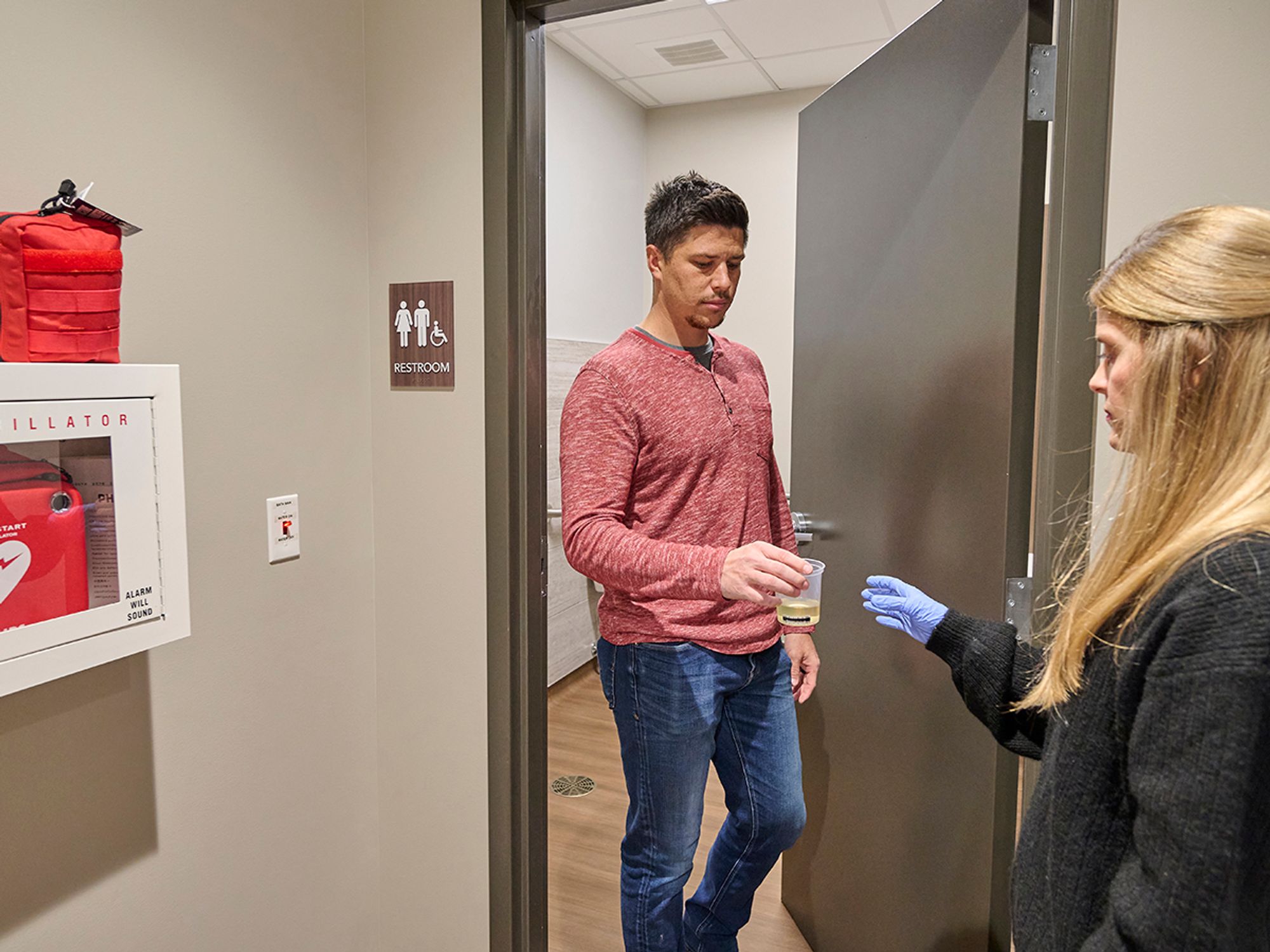InstituteDrug and alcohol policy - Motor CarrierAlcohol testing - Motor CarrierMedical review officer (MRO) - Motor CarrierFleet SafetyDrug and Alcohol Testing - DOTDrug testing - Motor CarrierTransportationIn Depth (Level 3)Split specimen - Motor CarrierSubstance abuse professional (SAP) - Motor CarrierEnglishAnalysisFocus AreaUSA
Drug testing
['Drug and Alcohol Testing - DOT']

- Drug testing must be conducted and documented according to DOT regulations.
- Test results determine what actions will follow.
For drug testing:
- A trained collector at a compliant collection site collects a urine or oral-fluid sample from the driver using an approved collection kit. In some cases, the driver must be observed while providing a urine specimen.
- The collector splits the specimen into two bottles, completes a portion of the Department of Transportation (DOT) drug testing chain-of-custody form, and sends the samples to an approved laboratory for testing.
- The laboratory tests the sample and provides the test results to the carrier’s selected medical review officer (MRO).
- The MRO reviews and confirms the test results. If the result is negative, the required paperwork is completed and the employer is notified. If the result is not negative:
- The MRO contacts the driver to discuss the results.
- In some cases, the driver is given the option to have the second (split) specimen tested. If the driver elects (within 72 hours) to have this second test, the split specimen is sent to another laboratory for testing.
- When the results are confirmed, the employer is notified.
- Drivers with a confirmed positive drug test result must be removed from duty and referred to a substance abuse professional (SAP) for treatment. Once the treatment process is complete, drivers may return to driving after passing a return-to-duty test, and then become subject to follow-up testing.
